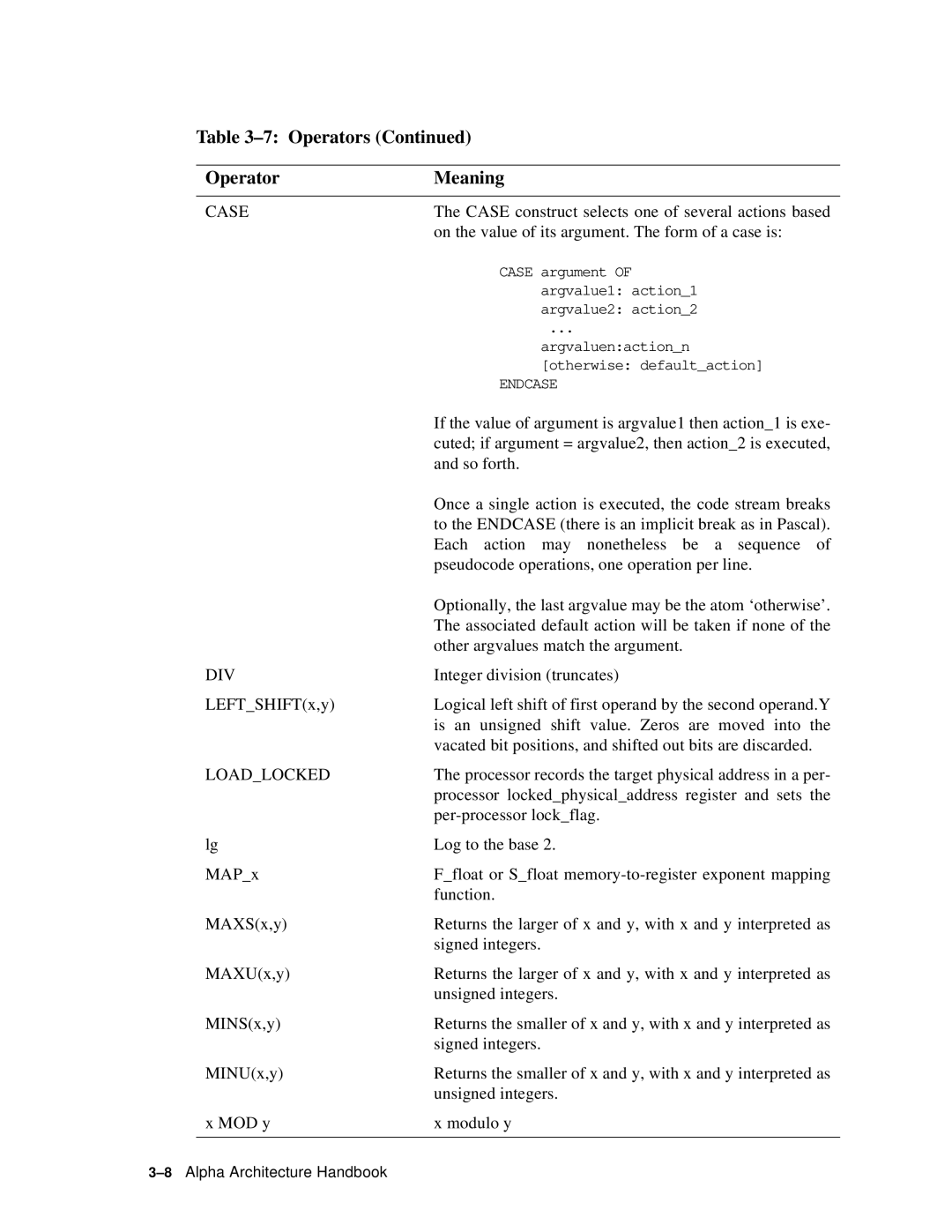Table 3–7: Operators (Continued)
Operator | Meaning |
|
|
CASE | The CASE construct selects one of several actions based |
| on the value of its argument. The form of a case is: |
| CASE argument OF |
| argvalue1: action_1 |
| argvalue2: action_2 |
| ... |
| argvaluen:action_n |
| [otherwise: default_action] |
| ENDCASE |
| If the value of argument is argvalue1 then action_1 is exe- |
| cuted; if argument = argvalue2, then action_2 is executed, |
| and so forth. |
| Once a single action is executed, the code stream breaks |
| to the ENDCASE (there is an implicit break as in Pascal). |
| Each action may nonetheless be a sequence of |
| pseudocode operations, one operation per line. |
| Optionally, the last argvalue may be the atom ‘otherwise’. |
| The associated default action will be taken if none of the |
| other argvalues match the argument. |
DIV | Integer division (truncates) |
LEFT_SHIFT(x,y) | Logical left shift of first operand by the second operand.Y |
| is an unsigned shift value. Zeros are moved into the |
| vacated bit positions, and shifted out bits are discarded. |
LOAD_LOCKED | The processor records the target physical address in a per- |
| processor locked_physical_address register and sets the |
| |
lg | Log to the base 2. |
MAP_x | F_float or S_float |
| function. |
MAXS(x,y) | Returns the larger of x and y, with x and y interpreted as |
| signed integers. |
MAXU(x,y) | Returns the larger of x and y, with x and y interpreted as |
| unsigned integers. |
MINS(x,y) | Returns the smaller of x and y, with x and y interpreted as |
| signed integers. |
MINU(x,y) | Returns the smaller of x and y, with x and y interpreted as |
| unsigned integers. |
x MOD y | x modulo y |
|
|
